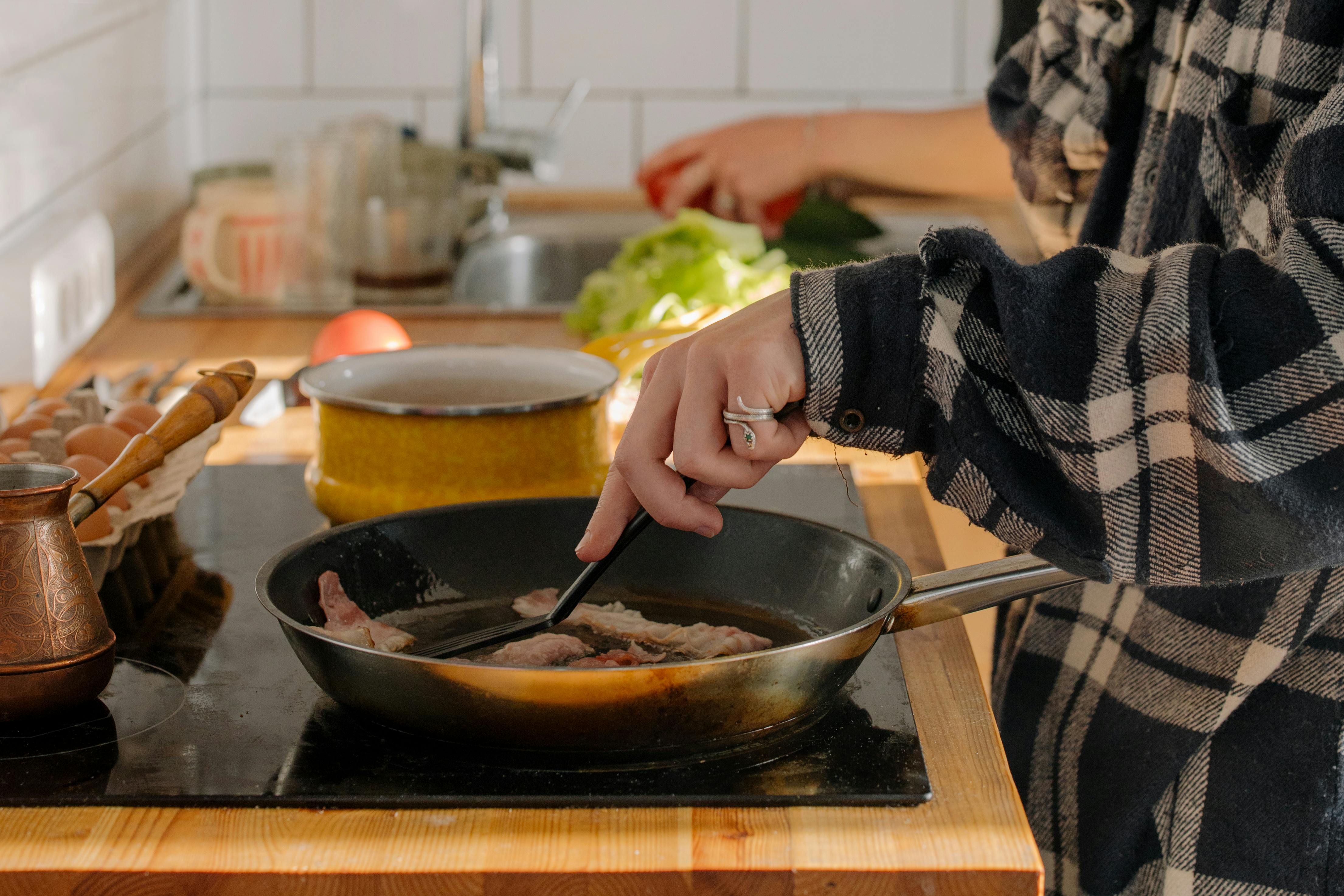
Shopping for a new hob can feel like a big decision. With so many types and features to choose from, it’s not always clear which one will suit your kitchen and your cooking style best.
This guide breaks down the most important questions to ask yourself before buying, from pan compatibility to cleaning, so you can choose with confidence.
Which type of hob should I choose?
There are three main options to go for:
Induction – Fast, efficient, and safe. Glass topped but with a difference. Induction hobs use magnetism to only heat the pan rather than the hob surface, so cooking is quicker and spills don’t burn on. The main consideration is making sure your pans are compatible.
Ceramic – Stylish, with a smooth glass surface that’s easy to wipe clean. They’re a little slower to heat and cool than induction but still offer modern features at a more affordable price point.
Gas – A traditional choice that offers instant, responsive heat. Great for stir-fries or when you want precise heat control. Cleaning can take more effort, as the pan supports and burners need regular attention.
Will my pans work?
This depends on the hob type:
Induction Hobs – Only works with magnetic-based pans (stainless steel and cast iron usually fine). There is usually markings on the underside of cooking pans to indicate hob compatibility. Or try this quick test: if a fridge magnet sticks to the bottom, the pan will work.
Ceramic & Gas Hobs – Compatible with most pans, including aluminium and copper.
If you’re considering induction and your current pans aren’t compatible, factor in the cost of replacing them.
What features are worth having?
Modern hobs often come with handy extras that make everyday cooking easier:
- Power Boost – For rapid boiling or searing.
- Bridged Zones – Link two zones into one to accommodate large or rectangular pans.
- Touch or Slider Controls – Easy to use and wipe down.
- Timers – Automatically switch off a zone when cooking is done.
- Child Locks – A standard for probably all electric based hobs. Safety for family kitchens.
- Residual Heat Indicators – Show if a zone is still hot after use.
How easy are hobs to clean?
Cleaning convenience is a big factor when choosing a hob:
Induction & Ceramic – Smooth, flat glass surfaces that are quick to wipe down. Induction has the advantage of not letting most spills burn on, as the surface doesn’t heat as much as the pan.
View our video: How to Clean a Cermaic Hob
Gas – Takes more effort, as supports and burners need cleaning separately. Look for dishwasher-safe parts to make life easier.
View our video: How to Clean a Gas Hob
How energy-efficient are they?
In order of most efficient to least there are clear differences and benefits to all hobs but Induction is a clear winner here.
Induction – The most efficient option, transferring heat directly into the pan with very little waste.
Ceramic – More efficient than gas but less so than induction.
Gas – Least efficient, as a lot of heat escapes around the pan, but many still prefer it for control.
Final tip
Think about how you cook day-to-day. This is one of the most important factors in steering a decision. Do you want low energy, lightning-fast boiling and easy wipe-down cleaning, or the look, control and accuracy of traditional flame control?
Also be aware of any extra expenses for new pans or switch of fuel type (Electric to Gas) you might need to get cooking. Once you know your priorities, it’ll be much easier to choose the right hob for your home.
View the full range here